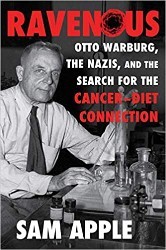Dr. Martin Arthur Couney (nee Michael Cohn) was one of the most improbable heroes of the early 20th century. For more than 40 years, he saved tiny premature babies by placing them in incubator sideshows at Coney Island and world’s fairs, right out on the midway, next to the sword swallowers and strippers. Rather than charge his patients’ parents, he funded his practice by charging admission to curious crowds, all the while fighting a medical establishment that claimed these were hopeless cases and a eugenics movement that wanted the weakest to die. He also helped get Jews out of Nazi Germany. Despite medical credentials that were as fabricated as his name, Dr. Couney was the hidden father of American neonatology, personally responsible for saving the lives of more than 6500 children. Some of them are still alive. This larger-than-life personality has been largely forgotten – until now.

Nonfiction
The Strange Case of Dr. Couney: How a Mysterious European Showman Saved Thousands of American Babies
March 29, 2018
Discussion Questions
Courtesy of Dawn Raffel
- “Dr. Martin Arthur Couney of France” (born Michael Cohn of Poland) was an extremely complicated man. He began by changing his name to sound not-Jewish (pretty much standard for Jewish showmen of the early twentieth Century). He then fabricated impressive French medical credentials and set about treating premature infants in incubator sideshows on the boardwalks of places like Coney Island. Outrageously, he hired barkers and charged admission to view his patients. And yet…despite his complete lack of medical training and his wildly unorthodox “hospital,” he was decades ahead of the American medical establishment. He saved preemies by the thousands when “real” hospitals could not and would not do it. Some of the roughly 7,000 people whose lives he saved are still alive (the oldest is ninety-eight), as are their thousands of descendants. So he was a fraud and a hero. How does Jewish teaching guide us when we have to make decisions about when/whether the ends justify the means? What does the Torah teach us about complicated men and women?
- Martin Couney was not observant in any traditional way. Yet in addition to saving preemies, he stuck his neck out to get Jews out of Germany in the late 1930s — writing affidavits and sending money first for his niece and nephew, but then for others who were strangers. What makes somebody a “good Jew”? Is it observance, or action, or many possible combinations of both?
- One reason medical care for preemies was lacking in the early 20th Century is that they were classified as “weaklings” and “feeble” — and some had disabilities. Martin Couney was working in the shadow of a raging eugenics movement. Many people in the U.S. wondered whether “weaklings” were worth saving, and some of the most virulent eugenicists argued in favor of deliberately allowing infants with severe disabilities to die rather than offering treatment. Amongst themselves, they discussed murder. There’s clear evidence of their communication with the Nazis, who felt inspired by American eugenics. In addition, American eugenicists were influential with the State Department in preventing a “flood of Jews” from entering the country. So while America has been our safe harbor, it also bears some blame. Are there parallels to today’s news? How do we ensure there is never a repeat?
- By the end of the twentieth century, the medical pendulum had swung 180 degrees when it came to preemies. The push was on to take extreme measures for every baby, no matter how slim the odds of survival or how desperately compromised the infant — with some doctors worrying that they were only prolonging suffering. Today, lifesaving technology makes these questions even harder. How do we define quality of life? To what extent does it matter whether the patient is a newborn or a nonagenarian? When is it cruel to force a heart to beat?
- In addition to lifesaving technology, we now also have genetic testing and editing. These tests will soon be able to identify not only fatal and heartbreaking anomalies but also “undesirable” characteristics. Again, who decides which lives are worth living, and where do we draw the line?
- Are there any preemies in your family? How did they fare? Do you have an inspiring true story to share?

Jewish literature inspires, enriches, and educates the community.
Help support the Jewish Book Council.

